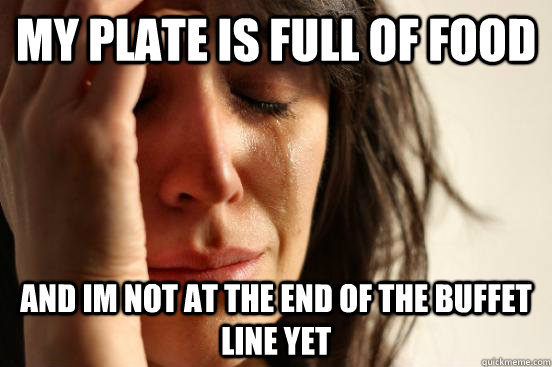Pastoral musicians: how are you being served?
 A young pastoral musician and a faithful practicing Catholic who served as a cantor in a parish recently revealed that she did not regularly participate in the reception of Communion. When I asked her why, she answered that the music director began the song at the beginning of the Communion processional. She said that when the song ends in a timely way at the end of the procession, "everyone packs up and forgets all about me."
A young pastoral musician and a faithful practicing Catholic who served as a cantor in a parish recently revealed that she did not regularly participate in the reception of Communion. When I asked her why, she answered that the music director began the song at the beginning of the Communion processional. She said that when the song ends in a timely way at the end of the procession, "everyone packs up and forgets all about me."
After serving in a myriad of pastoral settings as a pastoral musician for many years, I completely understood. Unless pastoral musicians advocate for themselves and remind other well intentioned ministers that musicians are part of the worship community and participate as full members of that assembly in the reception of Eucharist. More often than not, pastoral musicians must take it upon themselves to make others of aware that people create the music that serves the liturgy, the young cantor's dilemma occurs and will continue to occur everywhere that the celebration of the liturgy takes place.
To be fair, the young cantor's music director followed in part what the General Instruction of the Roman Missal states with regard to music at the time of the reception of Communion:
"While the priest is receiving the Sacrament, the Communion Chant is begun, its purpose being to express the spiritual union of the communicants by means of the unity of their voices, to show gladness of heart, and to bring out more clearly the communitarian character of the procession to receive the Eucharist." GIRM 86
In other words, pastoral musicians begin the Communion song immediately after the Invitation to Communion ("Behold the Lamb of God.... Lord, I am not worthy that you should enter under my roof...")
In some parishes, the pastoral musicians keep the assembly waiting as they receive Communion before the assembly at worship. That equates to a host inviting guests to a lovely meal and eating the prepared feast before their guests in front of their guests. Servant leadership remains one of the hallmarks envisioned by the Second Vatican Council and a cornerstone of excellent pastoral music ministry. The music director who insisted that the young pastoral musician lead the Communion song immediately following the invitation was correct to insure that the robust singing of the assembly's Communion processional song is a "preeminent" factor of the liturgy. (Sing to the Lord #189) But maybe that music director didn't read the last line of #86 of GIRM, which clearly states:
"Care should be taken that singers, too, can receive Communion with ease."
Pastoral care with ease for liturgical musicians. How do pastoral musicians insure that "the music ministers...should receive Communion during the Communion of the faithful" (Music in Catholic Liturgy: A Pastoral And Theological Companion to Sing to the Lord by Gerard Dennis Gill) that more fully expresses the unified activity of the worship assembly at prayer? Pastoral musicians serve on behalf of the people of God, usually as fully initiated and trained leaders of the musical liturgy. Pastoral musicians: how are you being served?
Here are several practical suggestions that may help if this is a problem that applies to your particular liturgical context. The methods are tried, true and tested applications that really do work.
 1. Communicate. When I asked the young cantor if she had talked to her music director about her conundrum, she told me that after many months, she decided to broach the subject. Because she previously worked in settings and understood that "the singers and other musicians may receive Communion at or near the end of the procession" (STL 195), she suggested that after the song ended at the end of the reception of Communion, the presider or one of the other Communion ministers wait for her to approach them for the reception of the Sacrament. In over forty years of ministry, I've never known any priest presider to ignore this request. Her music director brought the cantor's issue to the pastor who immediately amended the situation. The young cantor now receives Communion on a weekly basis and feels like the full member of the Body of Christ.
1. Communicate. When I asked the young cantor if she had talked to her music director about her conundrum, she told me that after many months, she decided to broach the subject. Because she previously worked in settings and understood that "the singers and other musicians may receive Communion at or near the end of the procession" (STL 195), she suggested that after the song ended at the end of the reception of Communion, the presider or one of the other Communion ministers wait for her to approach them for the reception of the Sacrament. In over forty years of ministry, I've never known any priest presider to ignore this request. Her music director brought the cantor's issue to the pastor who immediately amended the situation. The young cantor now receives Communion on a weekly basis and feels like the full member of the Body of Christ.
2. Take some time to do some liturgical catechesis with your assembly. In my experience, assemblies want to know why they do what they do. Some of the responsibility of liturgical catechesis certainly falls to presbyteral leaders in their places of worship. However, there is no reason why pastoral musicians cannot directly address issues in a conversation with a worshipping assembly. Bulletin announcements can serve the purpose but I find that people genuinely enjoy the relationship building process with their pastoral musicians when they engage in a dialogue that awakens a worshipping assembly about why we Catholics do what we do within worship. Once you explain a new tradition, most members of a worship assembly (there are always a few naysayers in a community) are genuinely open to positive change, particularly if you communicate in a positive, intelligent way.
3. Lofts If your choir sings from a loft in a church, talk to the pastor about assigning a Communion minister to bring a ciborium up to the loft at the end of Communion so that the choir and the organist may be served after their work is completed. In my experience, people are supportive and even eager that their liturgical musicians participate as worshipping members of the Body of Christ. It's what makes us us. Moreover, assemblies often feel grateful and humble that the servant musical leaders wait until everyone has been served before they are served. As St. Francis of Assisi said: Preach the Gospel. Use words when necessary. That liturgical action speaks volumes about that parish's perception of itself, liturgical servant leadership and how it accommodates not only the rubrics of a celebrated Eucharist but of the assembly and how well they all understand what they're about.
4. Music near or in the sanctuary. When an organist or guitarist accompany a cantor, an ensemble or a choir from the sanctuary or nearby, wait until the end of Communion before the music corps receives Communion. Ask the person who trains the Communion ministers to assign a bread and cup minister to the music section and to wait until the Communion song is finished before they approach the musicians for their reception of Communion in full view of the Body of Christ. This produces a moment of deep gratitude on the part of just about everyone (remember the few naysayers) who worships in those pew.
After these practices begin to be part of the parish paradigm and practice, parishioners start to inquire why parishes that they visit do not follow this system of courtesy and liturgical justice. They do appreciate the time that you take to educate in sound liturgical practice. They're grateful to be well educated in the life of their liturgical faith.
In several contexts where I served a the music director in parishes and several colleges, the choir would process to Communion while singing the song by heart (in four parts). I was the last person served. Even when I removed my hands from the keyboard, the choir, cantor and assembly continued to sing the song until I returned and continued to play and direct from the bench right from where we left off together. The ceiling lifted when we sang the last verses as the dishes were cleaned.The song ceased when the presider returned to his chair for the Thanksgiving after Communion. The communities that experienced this model can never return to a different paradigm without knowing a deep absence of liturgical unity in their bodily presence to the moment, their continued singing as they processed as part of the assembly and in their continued liturgical song even in my momentary absence.
Pastoral musicians are human beings. Pastoral musicians have to occasionally nudge, communicate clearly and repeat as much as necessary (remember the persistent widow) until a liturgical team understands that human beings are the disciples that create the music that also means giving up weekends, many nights, vacations, family life and hefty salaries and need to feel included as part of the Body of Christ as much as anyone else that celebrates Eucharist. Mostly, "Liturgical musicians first of all disciples, and only then are they ministers. Joined to Christ through the Sacraments of Initiation, musicians belong to the assembly of the baptized faithful; they are worshipers above all else.... who express the love of God and neighbor through music." (STL 49)
Consider the young cantor at the beginning of this post. Are you the music director going half the distance and standing in the way of someone who wants to fully participate in a celebration of Eucharist? How you pastoral musicians being served? Are you the music director that walks to the sanctuary to receive feast at the table of life before your invited guests approach the banquet? And how about the Communion song during the procession? Might you be a young cantor and fear speaking out about not being served? Be not afraid; this might be the time to find your voice. Pastoral musicians, might it be time for a change of tradition to produce a liturgy worth the reason we celebrate - offering praise, glory and gratitude to God with the robust singing assembly fully participating, including the musicians as an servant-appropriate time as the Body of Christ?
Please feel free to share your experiences or post your comments directly to the blog. We can all learn from one another's experiences.
 Sing music from the heart by heart
Sing music from the heart by heart
N.B. Music for the Communion processional that includes well-known refrains work best so that the assembly can fully express their gratitude and unity as the Body of Christ as they process together in resonate song. Singing from the heart means singing music that the people know by heart. Building that kind of assembly repertoire remains a core goal in the strategic planning of every pastoral music leader since the earliest days following the Second Vatican Council. That takes time, patience and repetition. Over time, the results become apparent and your worship assembly will thank you as they sing well and pray twice.
 Denise Morency Gannon
Denise Morency Gannon



